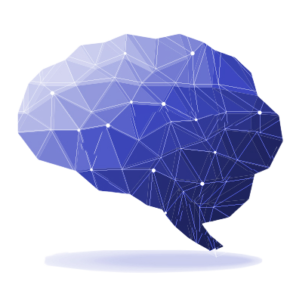Backed by Science, Built for Athletes

WE ARE A SPORTS COMPANY COMBINING WEARABLE TECHNOLOGY WITH ACTIONABLE INSIGHTS
DATA ANALYTICS IS THE FUTURE OF SPORT SAFETY
Head injuries and concussions continue to drive concern and widespread controversy in contact sports with 80% going unidentified, unrecognized, or often undiagnosed. Studies show exposing the crown of head through contact or athletes experiencing high head impact workloads often drive these injuries. Over the years we have seen rule changes and technique adjustments evolve in an attempt to protect the player and protect the head. With Athlete Intelligence, we bring a data driven approach to fill the gap between what Coaches Teach their athletes and how they perform on the field.
MAKE DATA DRIVEN DECISIONS
At the intersection of data collection and player intervention, you will find Athlete Intelligence. With over 10 years of Research and Development, we bring world-class wearable technology and actionable insights to the playing field. If we know where and how many impacts our athletes take, we will be able to reduce the number. If we reduce the number, we will reduce head injuries. If we reduce head-injuries, we will protect our athletes. In the fight against concussions, data is our best defense.
CHALLENGE
Head-related injuries may occur in almost any sporting activity but become most common in contact and collision sports. Still, no product will prevent, identify, or diagnose if a concussion has been sustained. It is our mission to help Teams adopt a data driven approach to reducing the risk of head related injuries.
INNOVATE
Equipment will evolve, rules will change, and protocols will improve. As we continue to challenge ourselves to get better, the athletes who play the sports we love will benefit. Data will help us measure improvements and trends over time that provide key learnings about head contact exposure and how we can mitigate risk to student-athletes.
EXECUTE
We help set the new standards for athlete safety by incorporating a data driven approach. Data lets you measure and manage everything that occurs on the field during play and brings a quantitative approach to help Team Staff members make more informed decisions.
VALIDATED BY UNIVERSITIES AND TOP RESEARCH INSTITUTIONS
Athlete Intelligence continues is platform of choice for many Universities and Research Institutions. As these communities strive to learn more about concussions and causes of head injuries in sports, Athlete Intelligence has become platform of choice as the first data analytics company to provide on-field and real time data tracking for helmeted and non helmeted sports. Data is going to help uncover what we can’t see and provide key leanings on trends and outliers of how our athletes perform. With Athlete Intelligence, we offer head kinematics detail and raw data exports to the highest level of accuracy.
THE SCIENCE BEHIND THE VECTOR MOUTHGUARD
After 5 years of Research and Development, in 2015 Athlete Intelligence launches their first commercialized product, the VECTOR™ Mouthguard. The VECTOR™ MouthGuard is the first real-time, uninterrupted head-impact monitoring mouthguard providing instant feedback about the impacts sustained by athletes on the field during play. Through years of both lab and on-field testing and validation, Athlete Intelligence becomes the first company to commercialize an impact sensing mouthguard embedded with the technology to accurately and efficiently track actionable head kinematics and raw data exports. When paired with the Athlete Intelligence platform, users have a complete visualization of team, position, and athlete’s exposure levels of location, count, and severity for head-related impacts.
View the Athlete Intelligence Whitepaper to take an insider look of the science behind the development of the VECTOR™ MouthGuard.
RESEARCH STUDIES USING ATHLETE INTELLIGENCE
Athlete Intelligence has been selected as Head Impact Monitoring solution of choice by many Universities and top Research Institutions. View some of the studies we have been involved in below.
Association of Football Subconcussive Head Impacts With Ocular Near Point of Convergence
Biomechanical Correlates of Symptomatic and Asymptomatic Neurophysiological Impairment in High School Football
Magnitude and Frequency of Head Impact Among University American Football Players
An Instrumented Mouthguard for Measuring Linear and Angular Head Impact Kinematics in American Football
Subconcussive Head Impact Exposure Between Drill Intensities in U.S. High School Football
Oculomotor Response to Cumulative Subconcussive Head Impacts in US High School Football Players
WHAT IS A CONCUSSION?
A concussion is a type of traumatic brain injury that is caused by a blow to the head or body, a fall or another injury that jars or shakes the brain inside the skull. Although there may be cuts or bruises on the head or face, there may be no other visible signs of a brain injury. Source: WebMD.com
Concussions remain a difficult diagnosis process and require the aid of medical professionals when checking an athlete for symptoms. While no product may be able to prevent, diagnose, or identify a concussion, risk can still be mitigated by ensuring athletes are using proper technique, removing head from contact, and are removed from play if concerns of big impacts have occurred.

3.8 mil
FACT : MORE THAN 3.8 MILLION CONCUSSIONS AND SPORTS BRAIN INJURIES OCCUR EACH YEAR.
What do many professional hockey players, professional football players and professional fighters have in common?
Over the course of their careers, they’ve all suffered from a concussion or multiple concussions. In some cases, their injuries abruptly ended their playing career.
But professional athletes are not the only players susceptible to concussion.
250 k
FACT : 250 THOUSAND CONCUSSIONS OCCUR IN HIGH SCHOOL FOOTBALL EACH YEAR.
Any athlete – especially those who participate in collision sports like football, hockey and lacrosse – can sustain a concussion. However, collision sports athletes are not the only ones susceptible to sports brain injury. Concussions have been reported in players from many different types of sports, including boxing, soccer, BMX, softball, cheerleading, diving and more.
Concussions don’t just occur in games, either. Anytime an athlete suits up, for practice or performance testing, they’re at risk.
300 k
FACT : 300 THOUSAND OF THESE SPORTS BRAIN INJURIES WILL RESULT IN A LOSS OF CONSCIOUSNESS.
WebMD.com states that you don’t have to pass out (lose consciousness) to sustain a concussion. Some people will have obvious symptoms of a concussion, such as passing out or forgetting what happened right before the injury. But other people won’t.
According to this University of Pittsburgh study, concussions can often cause major, long-term brain impairments in information-processing speed, problem solving, planning and memory. In simpler terms, concussions can destroy your brain’s ability to function normally.
These impairments are worse with multiple concussions.
Typical Symptoms of A Concussion :
- Headache
- Dizziness
- Nausea and/or vomiting
- Delayed verbal and/or motor response
- Confusion and/or difficulty concentrating
- Disorientation
- Slurred and/or incoherent speech
- Incoordination
- Ringing in the ears
- Inability to remember recent or past events
- Loss of consciousness
- Sleep disturbances
- Disorientation
- Photophobia (sensitivity to light)
- Sensitivity to loud noises
- Fogginess

A REVOLUTION IN THE FIGHT AGAINST HEAD INJURIES
Studies show exposing the crown of head through contact or athletes experiencing high head impact workloads often drive head injuries. To combat this, Athlete Intelligence is leading the revolution in the fight against head injuries for contact and collision sports. With the Athlete Intelligence Head-Impact Monitoring and Performance Tracking Platform, we’re giving sideline personnel a real-time understanding of what happens during games and practice, and how head-impact data can help an athlete play better and safer. Using sensors like our VECTOR MouthGuard, CUE Sport Sensor, or CUE+, Athlete Intelligence brings automated reporting and analytics from the field of play to a measurable understanding of exposure sustained. If we know where and how many impacts our athletes take, we will be able to reduce the number. If we reduce the number, we will reduce head injuries. If we reduce head-injuries, we will protect our athletes. In the fight against concussions, data is our best defense.
ATHLETE INTELLIGENCE SYSTEM
<strong>Q: How does head-Impact monitoring help my team?</strong>
<strong>Q: Will this system help identify or diagnose concussions?</strong>
<strong>Q: Do the parents have access to the data?</strong>
<strong>Q: What impact severity threshold should be set to flag the harder impacts?</strong>
<strong>Q: How does knowing the impact location of each hit help my team?</strong>
<strong>Q: How does knowing the impact quantity help my team?</strong>
<strong>Q: How does knowing the impact severity help my team?</strong>
PRODUCTS
<strong>Q: What does the Vector MouthGuard and CUE Sport Sensor Measure?</strong>
<strong>Q: What is the main difference between the Vector MouthGuard and CUE Sport Sensor?</strong>
<strong>Q: Why is the Vector MouthGuard considered the more premium product?</strong>
<strong>Q: How do I turn on the Vector MouthGuard?</strong>
<strong>Q: What sports does the Vector MouthGuard work best for?</strong>
<strong>Q: What sports does the CUE Sport Sensor work best for?</strong>
<strong>Q: Can I use my Vector MouthGuard with braces?</strong>
<strong>Q: How is the Vistamaxx material different from a normal mouthguard?</strong>
<strong>Q: Will the CUE Sport Sensor ever transmit in real-time like the Vector MouthGuard?</strong>
MISCELLANEOUS
<strong>Q: Can I purchase a single Vector MouthGuard or a Single CUE Sport Sensor?</strong>
<strong>Q: How do teams typically pay for the system?</strong>
<strong>Q: Is the Impact data stored safely and secure?</strong>
<strong>Q: How much does the Vector MouthGuard cost?</strong>
<strong>Q: How much does the CUE Sport Sensor cost?</strong>
Have additional questions? Contact us at: info@athleteintelligence.com.
In Every Athlete There is Pure Potential
In our information booklet you'll gain instant access to how you can improve technique, manage head-impacts, and reduce the risk of injury for your athletes.
What you will find in the Athlete Intelligence Info Booklet:
- Athlete Intelligence Mission.
- Head Impact Monitoring as the future of athlete Safety and Performance.
- Athlete Intelligence Web Platform and Product Features.
- Overview of the Athlete Intelligence Automated Reporting System.
- How to Make Data Driven Decisions to improve athlete performance and safety.


